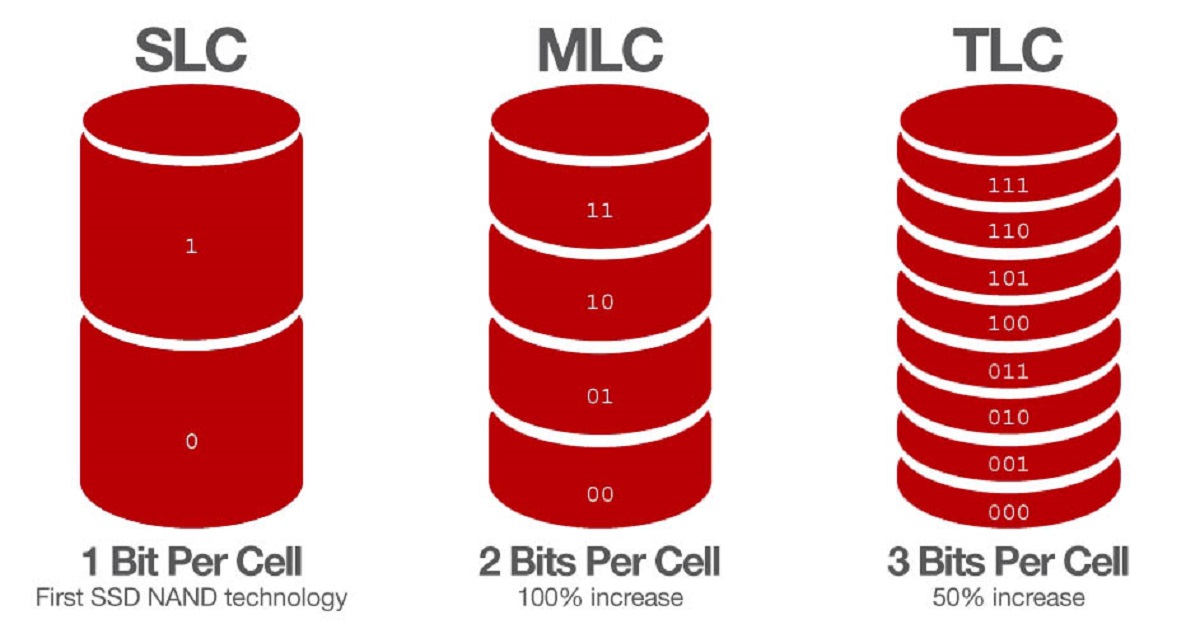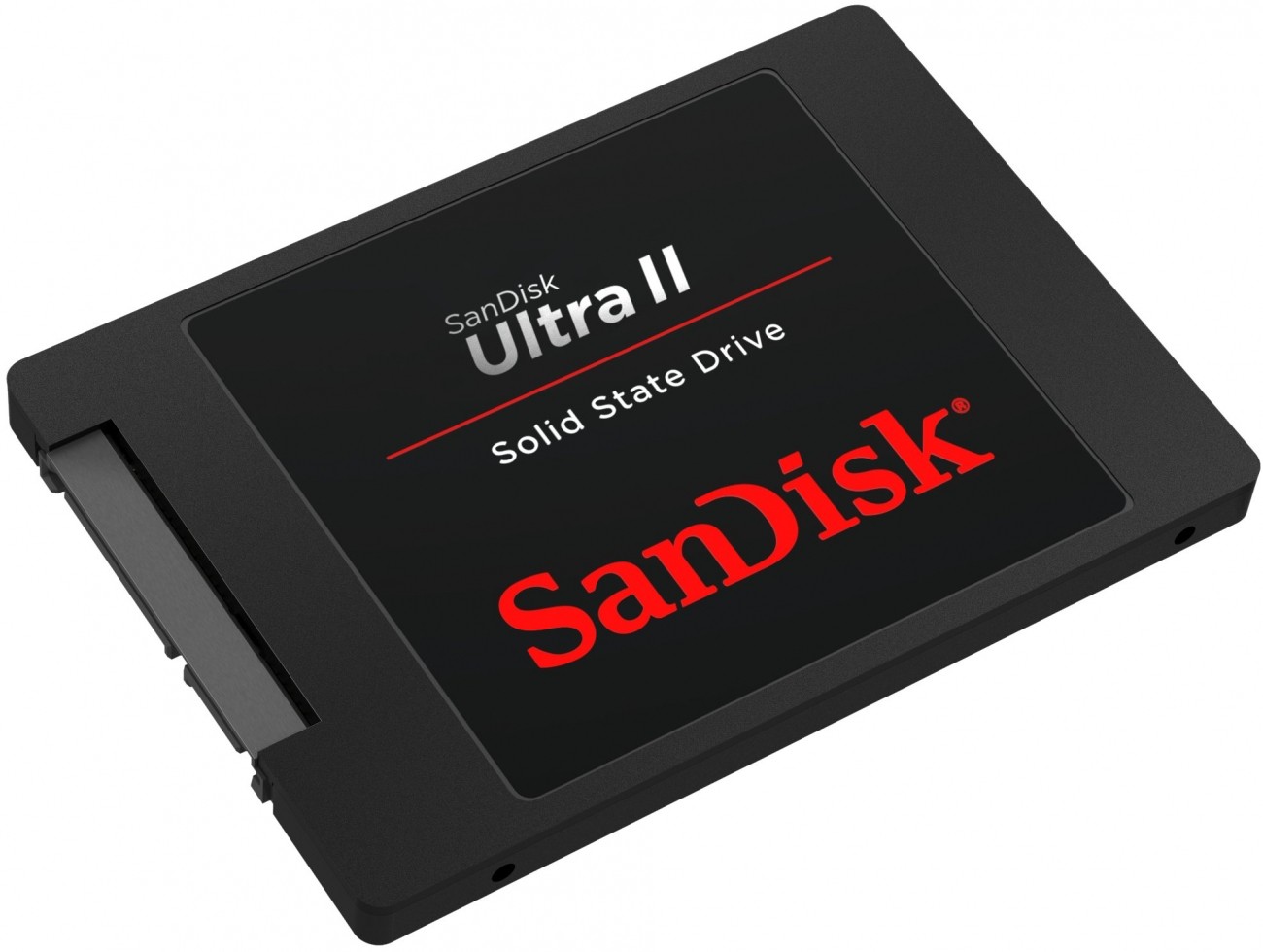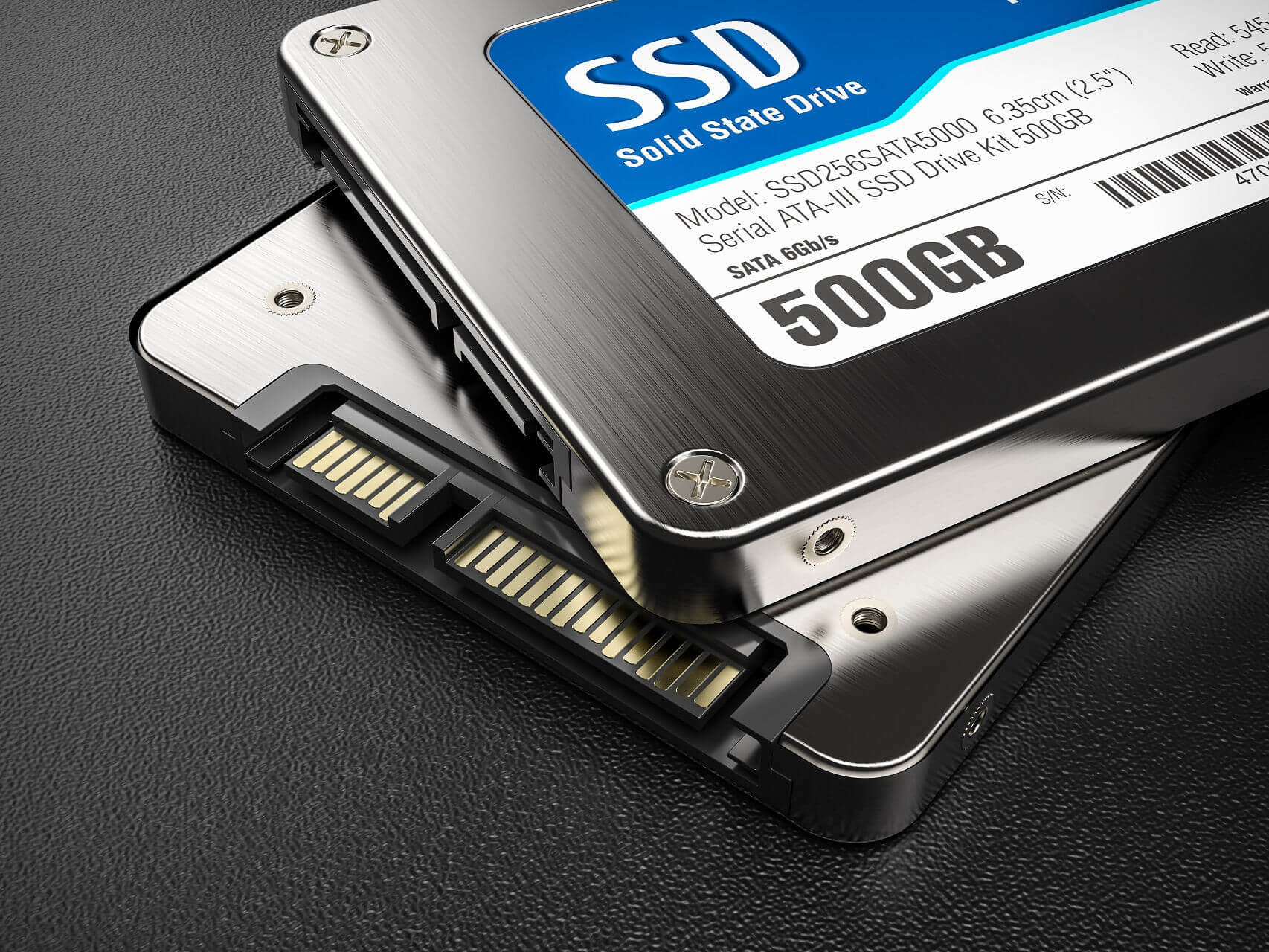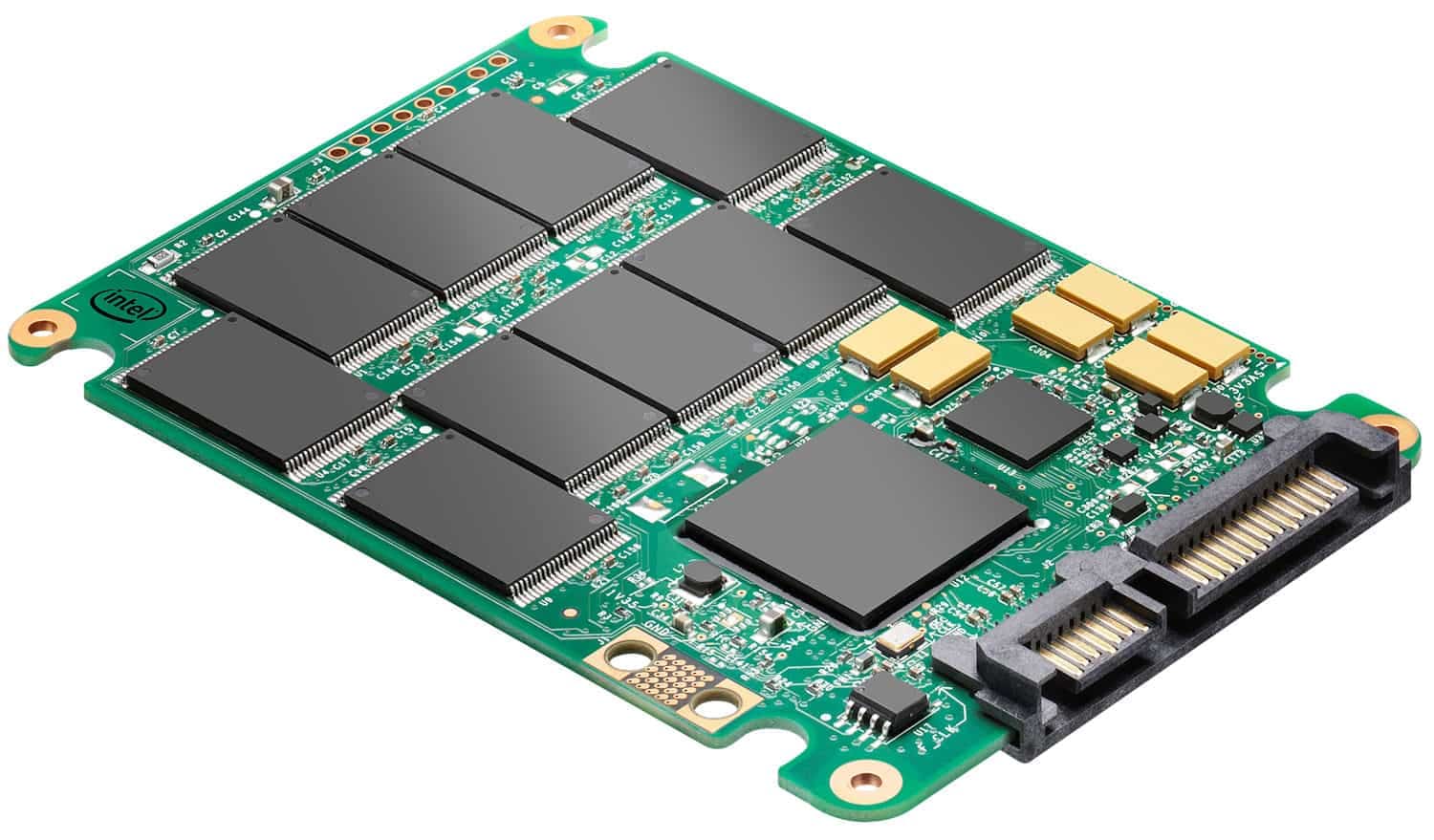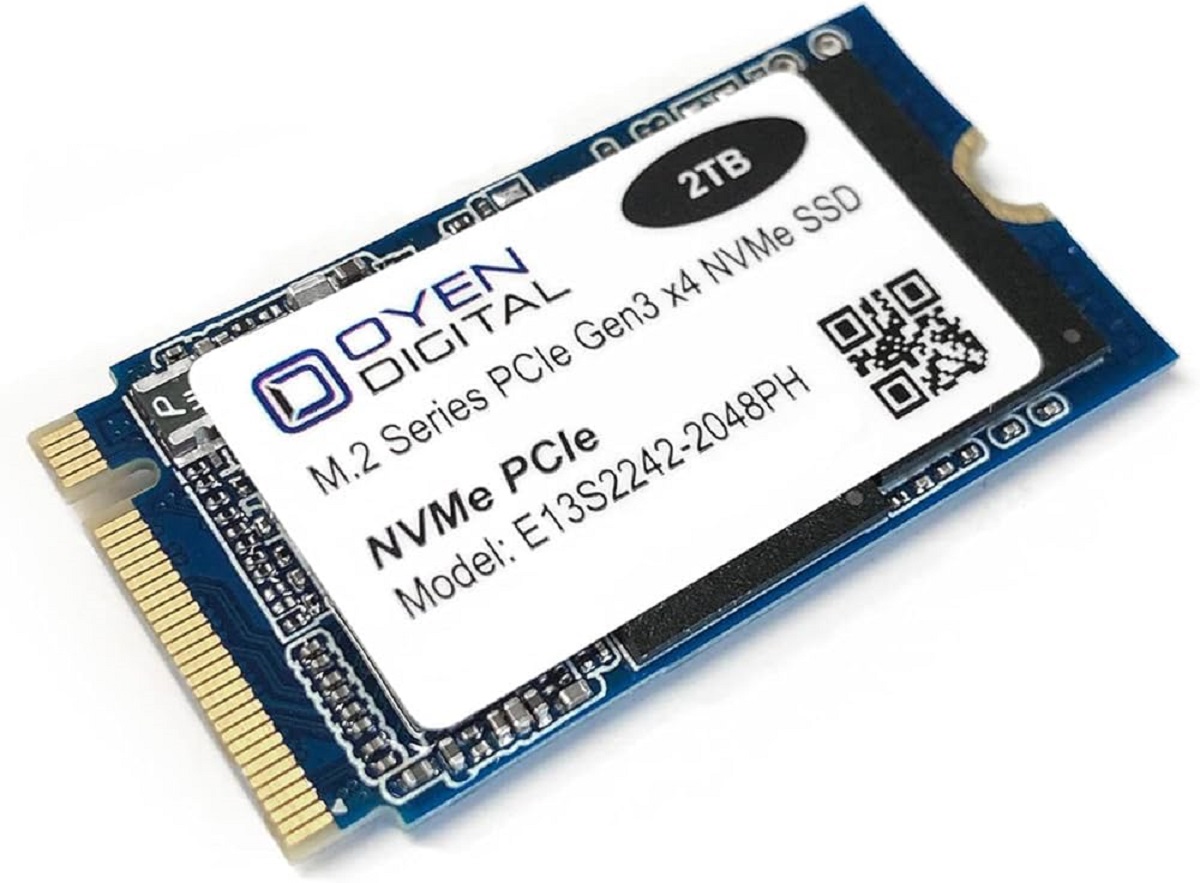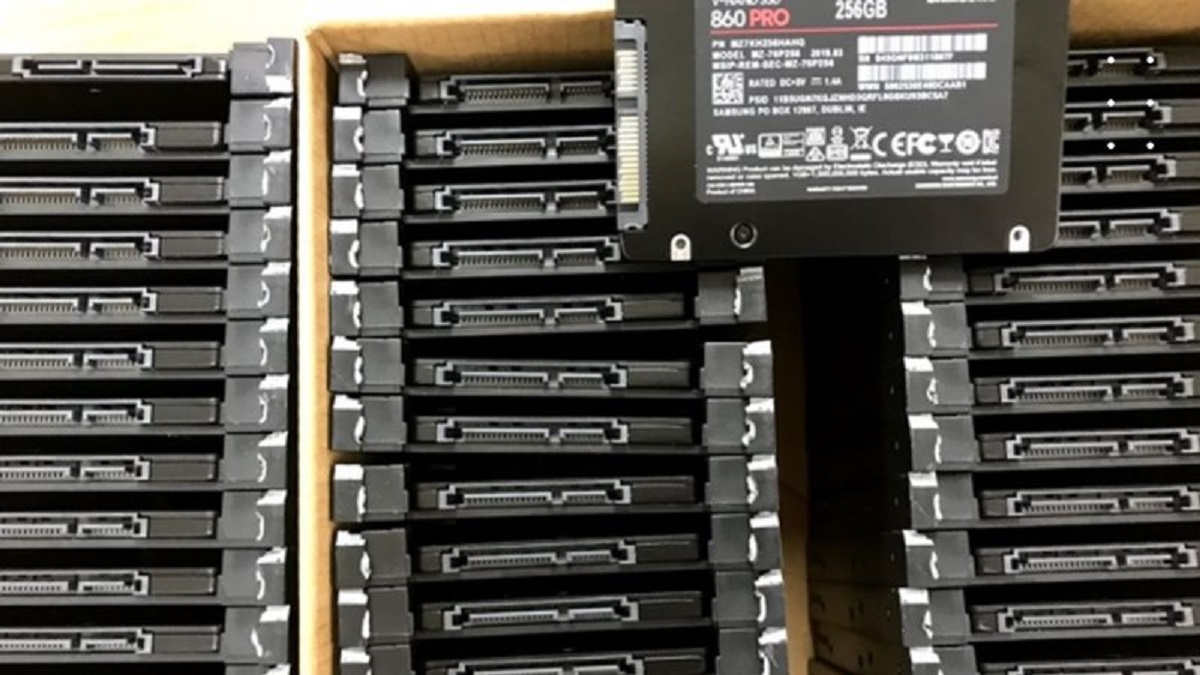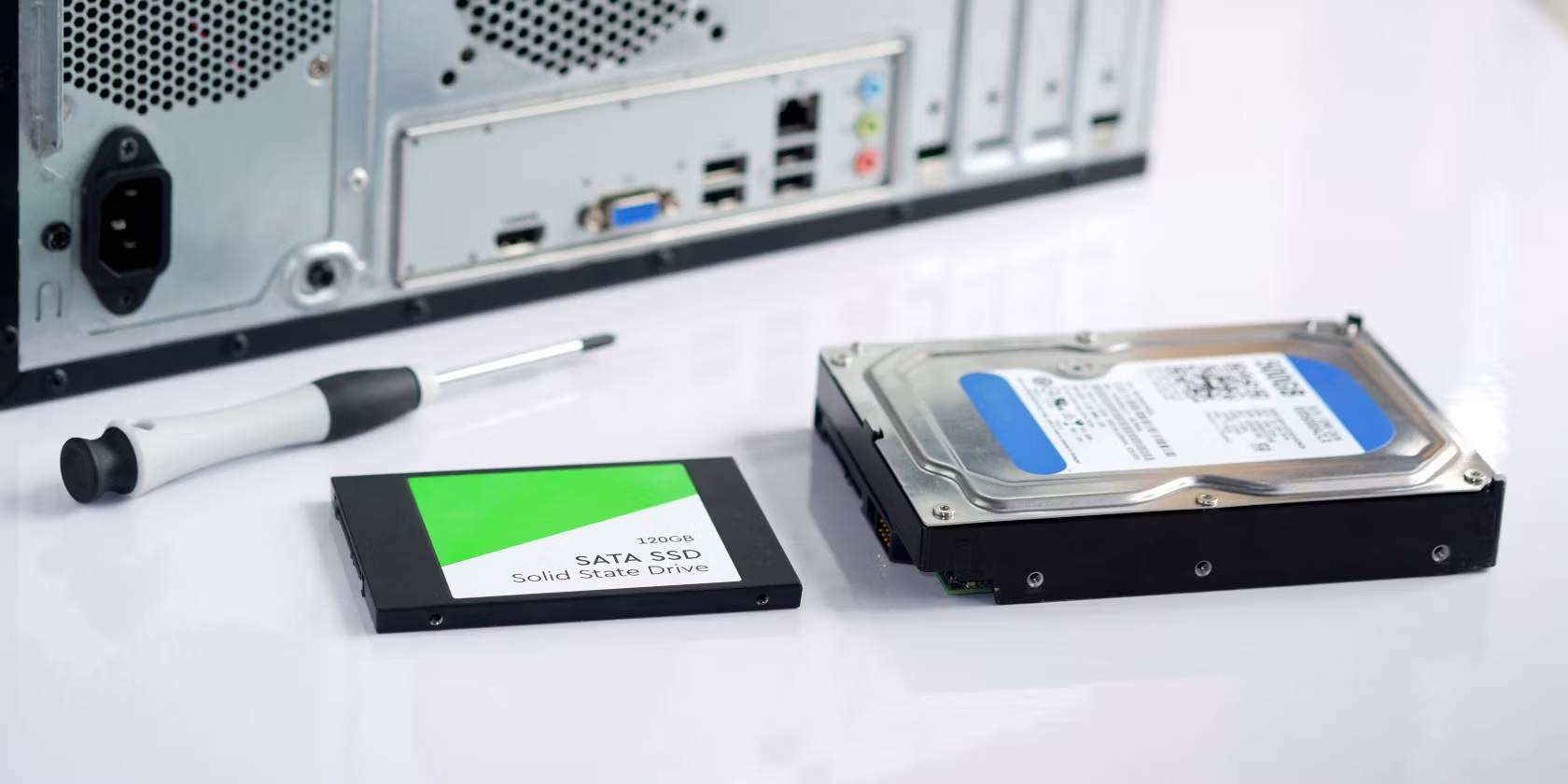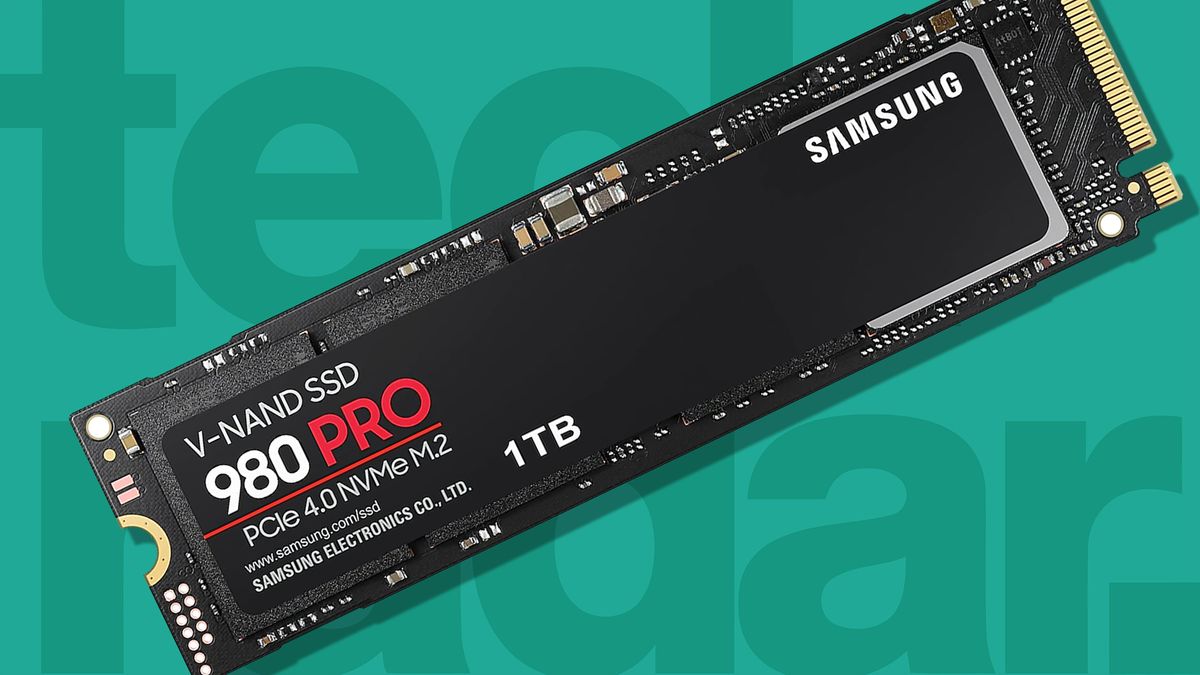Introduction
Welcome to the world of solid-state drives (SSDs), where speed and performance meet storage efficiency. As technology advances, the demand for faster and more reliable storage solutions continues to grow. Two common types of NAND flash memory that power SSDs are Multi-Level Cell (MLC) and Triple-Level Cell (TLC). Understanding the difference between MLC and TLC SSDs is crucial when choosing the right type of storage for your specific needs.
SSDs have revolutionized data storage by replacing traditional hard disk drives (HDDs) with a more efficient and faster alternative. Unlike HDDs, which use spinning magnetic disks to store data, SSDs utilize NAND flash memory technology. NAND flash memory is responsible for storing data in solid-state drives and is the key factor that sets MLC and TLC SSDs apart.
Although both MLC and TLC SSDs are based on NAND flash memory, they differ in the way they store information. MLC SSDs use multi-level cell technology, while TLC SSDs employ triple-level cell technology. These technologies determine the amount of data that can be stored in each memory cell and affect the performance, endurance, and cost of the SSD.
In this article, we will explore the key differences between MLC and TLC SSDs, including their performance, endurance, and cost factors. By the end, you will have a better understanding of which type of SSD suits your needs best.
What is SSD?
Before diving into the differences between MLC and TLC SSDs, let’s first understand what an SSD is. A solid-state drive (SSD) is a non-volatile storage device that uses NAND flash memory to store and retrieve data. Unlike traditional hard disk drives (HDDs), which rely on moving mechanical parts, SSDs have no moving parts and store data electronically.
SSDs offer several advantages over HDDs, including faster data transfer speeds, improved overall system performance, and enhanced durability. This is because SSDs have no physical limitations, such as spinning platters or read/write heads, that can cause delays or failures. With lightning-fast access times and impressive data transfer rates, SSDs have become the storage solution of choice for many computer users.
In addition to their speed and performance benefits, SSDs also provide better reliability and energy efficiency. Since SSDs have no mechanical components, they are less prone to physical damage and are more resistant to shocks and vibrations. SSDs also consume less power and generate less heat compared to HDDs, making them an ideal choice for laptops and portable devices.
Another significant advantage of SSDs is their silent operation. HDDs produce noise due to the spinning disks and moving read/write heads, which can be distracting in quiet environments. In contrast, SSDs produce no noise as they have no moving parts.
SSDs come in various form factors, including 2.5-inch drives for desktops and laptops, M.2 drives for ultrabooks and tablets, and PCIe-based drives for high-performance gaming and professional workstations. With their compact size and lightweight design, SSDs are easy to install and provide flexible storage options for different device types.
Overall, SSDs have revolutionized the storage industry by offering fast, reliable, and efficient storage solutions for both personal and professional use. Whether you’re a gamer, content creator, or someone who values speed and performance, an SSD is a worthwhile investment to enhance your computing experience.
What is NAND Flash Memory?
NAND flash memory is the underlying technology that powers solid-state drives (SSDs) and other electronic devices that require non-volatile storage. It is a type of flash memory that allows for high-density data storage, fast data transfer speeds, and low power consumption. Understanding NAND flash memory is essential when comparing MLC and TLC SSDs.
NAND flash memory is composed of memory cells that can retain data even when power is disconnected. These memory cells are organized into a grid-like structure called a “cell array.” Each cell in the array consists of a floating-gate transistor that acts as a switch to store electrical charges. These charges represent the binary digits (bits) of data – either 0 or 1.
What sets NAND flash memory apart from other types of flash memory, such as NOR flash, is its capability to store multiple bits of data in each memory cell. NAND flash memory can store two or three bits per cell, making it suitable for high-capacity storage devices like SSDs.
The term “NAND” stands for “Not AND,” which refers to the logic operation performed by the memory cells. When data is written to NAND flash memory, the electrical charges are trapped in the floating gate of the transistor, representing a logical “1.” To erase the data and reset the cell to a logical “0,” a high voltage is applied to remove the charges from the floating gate.
NAND flash memory is classified into different types based on the number of bits stored per cell, namely Single-Level Cell (SLC), Multi-Level Cell (MLC), and Triple-Level Cell (TLC). These classifications determine the density, performance, and endurance characteristics of the flash memory.
Overall, NAND flash memory has revolutionized the storage industry by providing fast, reliable, and high-capacity data storage solutions. Its ability to store multiple bits per cell makes it ideal for SSDs, where performance and efficiency are critical factors. By harnessing the power of NAND flash memory, MLC and TLC SSDs offer different trade-offs of performance, endurance, and cost, catering to the diverse needs of users.
The Difference Between MLC and TLC NAND Flash Memory
Multi-Level Cell (MLC) and Triple-Level Cell (TLC) are two types of NAND flash memory that differ in how many bits they can store within each memory cell. The main difference between MLC and TLC NAND flash memory lies in their density and performance characteristics.
MLC NAND flash memory can store two bits per cell, whereas TLC NAND flash memory can store three bits per cell. This fundamental difference in storage density translates into varying levels of performance, endurance, and cost between MLC and TLC SSDs.
MLC NAND flash memory offers higher performance and greater endurance compared to TLC NAND flash memory. Due to its lower bit density, MLC NAND allows for faster read and write speeds, which result in improved overall system performance. MLC SSDs are well-suited for demanding applications that require high-speed data access, such as gaming, multimedia production, and professional workstations.
In contrast, TLC NAND flash memory sacrifices some performance and endurance for higher storage density and lower cost. Although TLC SSDs may have slightly slower read and write speeds compared to MLC SSDs, they provide ample performance for everyday computing tasks and offer greater storage capacity at a more affordable price point. TLC SSDs are an excellent choice for casual users, general-purpose computing, and budget-conscious individuals.
Another notable difference between MLC and TLC NAND flash memory is their endurance or lifespan. MLC NAND flash memory has higher endurance due to its ability to store fewer bits per cell. Each cell in MLC NAND is subjected to fewer write cycles, resulting in longer lifespan and higher durability. This makes MLC SSDs more suitable for write-intensive workloads and applications that require frequent data modifications.
On the other hand, TLC NAND flash memory has lower endurance due to storing three bits per cell. Each cell in TLC NAND is subjected to more write cycles, which can decrease its lifespan over time. However, modern TLC SSDs incorporate advanced error correction and wear-leveling algorithms to mitigate the impact of reduced endurance, making them reliable and suitable for typical consumer applications.
Overall, the difference between MLC and TLC NAND flash memory boils down to their trade-offs between performance, endurance, and cost. MLC SSDs excel in high-performance and demanding workloads, offering faster speeds and greater durability. TLC SSDs, while sacrificing some performance and endurance, provide larger storage capacities at a more affordable price, catering to the needs of everyday users and budget-conscious individuals.
MLC SSD: Multi-Level Cell
MLC SSDs, or Multi-Level Cell SSDs, are based on NAND flash memory technology that can store two bits of data per memory cell. This higher density of information allows for greater storage capacity within the same physical space, making MLC SSDs an excellent choice for high-performance computing and demanding workloads.
One of the main advantages of MLC SSDs is their improved performance compared to other types of NAND flash memory. MLC SSDs offer faster read and write speeds, resulting in snappy system responsiveness and reduced data transfer times. This makes them ideal for resource-intensive tasks such as video editing, 3D rendering, and gaming, where quick access to large amounts of data is crucial.
In addition to their performance benefits, MLC SSDs also boast higher durability and longevity. Because MLC NAND flash memory stores fewer bits per cell compared to TLC or QLC NAND flash, each memory cell in an MLC SSD is subjected to fewer write cycles. This means MLC SSDs have a longer lifespan and can withstand more write operations before experiencing performance degradation.
MLC SSDs are also known for their superior endurance. Due to the lower bit density per memory cell, MLC SSDs can handle a higher number of program-erase cycles without experiencing significant wear. With advanced error correction algorithms and wear-leveling techniques, modern MLC SSDs offer excellent reliability and endurance for write-intensive workloads.
However, it is worth noting that MLC SSDs typically come at a higher cost compared to other types of SSDs. This is primarily due to the complex manufacturing process required to produce MLC NAND flash memory and the higher overall performance and durability they offer. For users who prioritize performance and enhanced longevity, MLC SSDs are a worthwhile investment.
In summary, MLC SSDs leverage the benefits of multi-level cell NAND flash memory to deliver superior performance, increased durability, and longer lifespan compared to other types of SSDs. Their faster speeds and higher endurance make them an ideal choice for professionals and enthusiasts who require top-notch storage solutions for their demanding computing needs.
TLC SSD: Triple-Level Cell
TLC SSDs, or Triple-Level Cell SSDs, are solid-state drives that utilize NAND flash memory technology capable of storing three bits of data per memory cell. TLC SSDs have gained popularity due to their high storage capacity and affordability, making them an attractive option for everyday users and budget-conscious individuals.
One of the key advantages of TLC SSDs is their impressive storage density. With the ability to pack three bits per cell, TLC SSDs offer higher storage capacities compared to MLC SSDs within the same physical form factor. This means users can store more files, documents, multimedia, and applications without worrying about running out of storage space.
While TLC SSDs may not match the same read and write speeds as MLC SSDs, they provide ample performance for typical computing tasks. They offer fast boot times, quick application loading, and smooth multitasking experiences, satisfying the needs of everyday users. TLC SSDs are well-suited for general-purpose computing, web browsing, media streaming, and light content creation.
A significant advantage of TLC SSDs is their affordability. Due to the higher bit density per memory cell, TLC NAND flash memory is more cost-effective to manufacture, resulting in lower-priced SSDs. This makes TLC SSDs an excellent option for budget-conscious individuals who desire reliable and speedy storage solutions without breaking the bank.
While TLC SSDs may have a slightly lower endurance compared to MLC SSDs, modern TLC SSDs are designed with advanced technologies to enhance their reliability and lifespan. Wear-leveling algorithms and improved error correction ensure that data is evenly distributed, preventing excessive wear on specific cells and reducing the risk of data loss. With proper usage and maintenance, TLC SSDs can offer years of reliable performance.
In summary, TLC SSDs strike a balance between affordability and performance, making them an attractive choice for everyday users and those on a budget. With their high storage density, smooth performance, and cost-effective pricing, TLC SSDs provide a reliable and budget-friendly storage solution for a wide range of consumer applications.
Key Differences between MLC and TLC SSDs
MLC (Multi-Level Cell) and TLC (Triple-Level Cell) SSDs are two popular types of solid-state drives with distinct characteristics. Understanding the key differences between MLC and TLC SSDs will help you make an informed decision when choosing the right storage solution for your needs.
1. Storage Density: The primary difference between MLC and TLC SSDs lies in their storage density. MLC SSDs store two bits per memory cell, while TLC SSDs store three bits per cell. As a result, TLC SSDs offer higher storage capacities at a more affordable price compared to MLC SSDs. If you require ample storage space, TLC SSDs are the way to go.
2. Performance: MLC SSDs generally deliver better performance than TLC SSDs. Due to their lower bit density, MLC SSDs offer faster read and write speeds, resulting in improved overall system responsiveness. If you prioritize speed and need a high-performance storage solution for demanding applications like gaming or professional workloads, MLC SSDs are a better choice.
3. Endurance: Endurance refers to how many program-erase cycles an SSD can withstand before performance degradation. MLC SSDs have higher endurance compared to TLC SSDs. With each memory cell storing fewer bits, MLC SSDs can endure more write cycles, making them suitable for write-intensive workflows. However, modern TLC SSDs have advanced error correction algorithms and wear-leveling techniques, which ensure reliable performance and longevity for typical consumer applications.
4. Cost: TLC SSDs tend to be more cost-effective than MLC SSDs. The higher storage density of TLC NAND flash memory allows manufacturers to produce larger capacity drives at a lower cost per gigabyte. This makes TLC SSDs an attractive choice for budget-conscious users or those who require substantial storage without spending a fortune.
5. Use Cases: MLC SSDs are best suited for high-performance applications that demand faster speeds and higher durability. They are ideal for gaming, multimedia production, and professional workloads. On the other hand, TLC SSDs excel in everyday computing tasks and offer reliable performance for general-purpose usage. They are suitable for web browsing, content streaming, document editing, and light content creation.
In summary, MLC and TLC SSDs differ in storage density, performance, endurance, cost, and targeted use cases. MLC SSDs offer higher performance, greater endurance, and are well-suited for demanding applications. TLC SSDs provide larger storage capacities at a more affordable price, making them ideal for everyday users and budget-conscious individuals. Consider your specific needs, budget, and usage patterns to determine which type of SSD best aligns with your requirements.
Performance Comparison between MLC and TLC SSDs
When comparing the performance of MLC (Multi-Level Cell) and TLC (Triple-Level Cell) SSDs, several factors come into play. Although MLC SSDs generally offer better performance, TLC SSDs provide ample speed and responsiveness for everyday computing tasks.
MLC SSDs, with their lower bit density, often deliver faster read and write speeds compared to TLC SSDs. This means quicker data access, faster file transfers, and reduced application loading times. MLC SSDs excel in resource-intensive tasks such as gaming, multimedia editing, and professional workloads, where quick access to large amounts of data is crucial.
On the other hand, TLC SSDs still provide satisfying performance for typical consumer applications. While they may not match the same level of speed as MLC SSDs, they offer more than enough performance for everyday computing tasks like web browsing, document editing, content streaming, and casual gaming.
It’s important to note that the performance of both MLC and TLC SSDs can be influenced by various factors, including the controller technology, firmware, and system configuration. The interface connection, such as SATA or NVMe, also plays a role in determining the overall performance of an SSD.
Modern TLC SSDs have seen significant technological advancements that have closed the performance gap with MLC SSDs. Advanced error correction algorithms and improved NAND flash management techniques ensure reliable data integrity and enhance overall performance. TLC SSDs also benefit from wear-leveling algorithms that evenly distribute write operations across the memory cells, prolonging the drive’s lifespan.
Ultimately, the choice between MLC and TLC SSDs depends on your specific needs and usage requirements. If you require maximum performance and are willing to invest in higher-end storage solutions, MLC SSDs are the optimal choice. However, if you prioritize cost-effectiveness, larger storage capacities, and satisfactory performance for typical computing tasks, TLC SSDs offer an excellent balance.
It’s worth noting that advancements in technology continue to bring improvements to TLC SSDs, making them increasingly competitive with MLC SSDs in terms of performance. As technology evolves, users can expect even better performance from TLC SSDs at affordable prices.
In summary, MLC SSDs generally offer superior performance, particularly in demanding applications. However, TLC SSDs provide satisfactory performance for everyday tasks and come at a more affordable price point. Consider your specific computing needs and budget to determine which type of SSD aligns best with your requirements.
Endurance and Lifespan Comparison between MLC and TLC SSDs
When comparing the endurance and lifespan of MLC (Multi-Level Cell) and TLC (Triple-Level Cell) SSDs, MLC SSDs typically have higher endurance and a longer lifespan due to their design and lower bit density per cell.
MLC SSDs store two bits of data per memory cell, while TLC SSDs store three bits per cell. This means that each MLC cell undergoes fewer program-erase cycles as compared to each TLC cell, resulting in improved endurance. MLC SSDs can handle a higher number of write cycles before experiencing performance degradation.
With fewer bits stored in each cell, MLC SSDs distribute write operations over a larger number of cells, reducing wear on individual cells. This wear-leveling feature helps maintain the overall lifespan and durability of the MLC SSD. It is particularly beneficial for scenarios that involve intensive write operations, such as frequent data modifications or running heavy workloads.
TLC SSDs, on the other hand, have a higher bit density per cell, resulting in a relatively lower endurance compared to MLC SSDs. Storing three bits per cell means that TLC cells undergo more write cycles, which can gradually contribute to wear and reduce the overall lifespan of the drive.
However, it is important to note that modern TLC SSDs incorporate advanced technologies and algorithms to mitigate the impact of reduced endurance. Improved error correction mechanisms and sophisticated NAND flash management techniques enhance data integrity and stability, ensuring reliable performance over extended periods. TLC SSDs also benefit from wear-leveling algorithms, which help distribute write operations and prevent excessive wear on specific cells.
Both MLC and TLC SSDs utilize mechanisms such as over-provisioning, TRIM support, and advanced firmware to optimize durability and maintain performance throughout their lifespan. These features help minimize the impact of write amplification and prolong the usable life of the SSD.
In practical terms, for typical consumer usage patterns, the endurance difference between MLC and TLC SSDs may not be a limiting factor. The vast majority of casual users and even some power users will not exceed the endurance limits of modern TLC SSDs within the typical lifespan of the drive.
Ultimately, if your workload involves a significant amount of sustained write operations or requires the utmost endurance, MLC SSDs may be the better choice. However, for everyday use and typical consumer applications, TLC SSDs provide sufficient endurance and reliability for long-term usage.
In summary, MLC SSDs offer higher endurance and a longer lifespan due to their lower bit density per cell. While TLC SSDs may have relatively lower endurance, advancements in technology, such as advanced error correction and wear-leveling algorithms, have significantly improved the durability and performance of TLC SSDs, making them suitable for typical consumer applications and everyday computing needs.
Cost Comparison between MLC and TLC SSDs
When it comes to cost, there are notable differences between MLC (Multi-Level Cell) and TLC (Triple-Level Cell) SSDs. The cost of an SSD is influenced by several factors, including the production process, storage density, and demand within the market.
MLC SSDs typically come at a higher cost compared to TLC SSDs. The manufacturing process for MLC NAND flash memory is more complex and expensive due to its lower bit density. Since MLC SSDs store two bits per cell, they require a larger number of memory cells to achieve the same storage capacity as TLC SSDs, which increases the overall cost of production.
TLC SSDs, on the other hand, provide a more cost-effective solution for consumers. The higher bit density of TLC NAND flash memory translates into lower manufacturing costs per unit of storage capacity. TLC SSDs can offer larger storage capacities at a more affordable price point, making them an attractive choice for users seeking budget-friendly storage solutions.
While MLC SSDs might have a higher price tag, it’s important to consider the specific requirements of your usage scenario. If you prioritize performance, durability, and can invest in a higher-end storage solution, MLC SSDs are worth the investment. They excel in high-performance applications that demand faster speeds and higher endurance.
However, if your needs revolve around ample storage space and cost-effectiveness, TLC SSDs offer an excellent balance. They provide satisfactory performance for everyday computing tasks and come with larger storage capacities at a more affordable price. TLC SSDs are a suitable choice for casual users, general-purpose computing, and those on a budget.
It’s also worth mentioning that the cost of both MLC and TLC SSDs has been declining over time as advancements in technology and manufacturing processes continue. As the market matures and demand increases, prices become more competitive, making SSDs increasingly accessible to a wider range of consumers.
Overall, when comparing the cost of MLC and TLC SSDs, it’s essential to consider your specific needs, budget, and usage patterns. Balancing your requirements and understanding the trade-offs between cost and performance will help you make an informed decision when selecting the right SSD for your computer system.
Conclusion
Choosing between MLC (Multi-Level Cell) and TLC (Triple-Level Cell) SSDs depends on your specific requirements, budget, and usage patterns. Each type of SSD comes with its own set of advantages and trade-offs.
MLC SSDs offer higher performance, greater endurance, and longer lifespans. They excel in demanding tasks, such as gaming, multimedia production, and professional workloads, thanks to their faster read and write speeds. MLC SSDs are a suitable choice for users who prioritize top-notch performance and enhanced durability, although they are typically more expensive.
On the other hand, TLC SSDs provide excellent cost-effectiveness, larger storage capacities, and satisfactory performance for everyday computing tasks. They are suitable for typical consumer usage, including web browsing, content streaming, document editing, and light content creation. While TLC SSDs may have relatively lower endurance, advancements in technology have improved their durability and made them reliable options for most consumer applications.
It’s important to consider the specific requirements and budget constraints of your computing needs. If you require high-performance storage for resource-intensive tasks or demand an extensive lifespan, investing in an MLC SSD might be the ideal choice. However, if you prioritize cost-efficiency and larger storage capacities without compromising everyday performance, TLC SSDs offer a suitable balance.
As technology evolves and SSDs continue to advance, the performance and reliability gap between MLC and TLC SSDs is narrowing. Modern TLC SSDs incorporate advanced technologies, such as improved error correction and wear-leveling algorithms, to enhance their endurance and performance. This makes them competitive alternatives to MLC SSDs, particularly for budget-conscious users.
In the end, the choice between MLC and TLC SSDs depends on your specific needs and budget. Assess your usage requirements, consider factors such as performance, endurance, cost, and choose the SSD that best meets your computing needs. Whether it’s for gaming, professional workloads, or everyday tasks, both MLC and TLC SSDs offer reliable and speedy storage solutions to enhance your computing experience.







